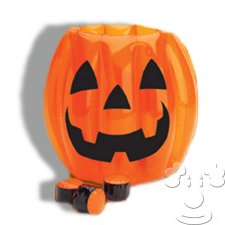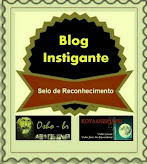The Origin of Halloween (republicando...)

Two thousand years ago, when the Celts occupied what we know as Ireland, the United Kingdom and northern France, they celebrated the new year on November 1st. The festival we now know as Halloween was once called Samhain (pronounced sow-in). Winter was a cold, uncompromising time in Northern Europe and was often associated with death. The Celts believed that on New Year's Eve (October 31st), the line between the spirit world and ours became blurred. Spirits were able to cross over on this evening and could stay if they were able to find a body to possess*. Obviously the living didn't want to have another spirit inside of them, so they made their homes as uninviting as possible and often dressed up like ghouls to scare the spirits away. In the 800s, Pope Boniface IV designated November 1st as All Saints' Day, as a church-sanctioned alternative to the Celtic holiday of the dead. This was also called All-Hallow's and All-Hallowmas, and the evening preceding it came to be known as All-Hallow's Eve, and later Halloween. Trick or Treat! The American custom of "trick-or-treating" was first seen in England during the early All-Hallow's parades. Poor people would sit at the side of the parade and beg for food and families distributed rich pastries** ("soul cakes") in return for their promise to pray for the family's dead relatives. This custom was soon taken up by children, who went house to house asking for money, food, and ale***. Modern Traditions As more immigrants flooded to America in the second half of the nineteenth century, the festival of Halloween came with them. Drawing on Celtic**** and English tradition, Americans began dressing up in colourful costumes and celebrating the feast of the dead. In the late 1800s, there was a move to make Halloween a more community-oriented holiday, shifting the focus away from ghosts and witchcraft. Because of these efforts, much of the superstition of Halloween was lost, replaced by parades, games and parties that were fun for the whole family. The practice of trick-or-treating was revived in the 1920s as a way for the whole village to participate in the celebration. In theory, families could prevent tricks from being played on them by giving small treats to the neighbourhood children. Halloween has continued to grow strong over the years and Americans now spend an estimated 6.9 billion dollars on costumes and candy per year, making it the country's second largest commercial holiday. In theory, families could prevent tricks from being played on them by giving small treats to the neighborhood children.
See more: http://ww3.free-english.com/english/Newsletters/ESLNewsletters.aspx#Dic3


















.jpg)




